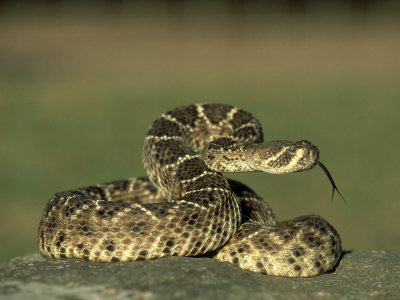 Few things are more inevitable than rattlesnake bites when you own a
horse. It’s just one of those things you have to be ready for, especially if you live in an area that’s
full of snakes. When the weather gets warmer and you head out on a ride, there’s always a chance you could
come across that horrifying rattling sound and witness as your horse falls victim to one of history’s
classic antagonists. But it also isn’t the end of the world, so keep calm and remember what to do when
your horse is bitten by a rattlesnake.
Few things are more inevitable than rattlesnake bites when you own a
horse. It’s just one of those things you have to be ready for, especially if you live in an area that’s
full of snakes. When the weather gets warmer and you head out on a ride, there’s always a chance you could
come across that horrifying rattling sound and witness as your horse falls victim to one of history’s
classic antagonists. But it also isn’t the end of the world, so keep calm and remember what to do when
your horse is bitten by a rattlesnake.
Generally, you’ll encounter the highest likelihood of a snake bite if the
weather is hot and dry, specifically in dessert climates. Snakes will hide under rocks, in tall grass, or just
wherever they darn well please, simply waiting for you and your horse to trot on by. Horses, being generally
curious animals, are likely to investigate this rattling noise unless they’re easily spooked. Hopefully they
decide to gallop away, but in the unfortunate circumstance that your horse takes a fang, here’s what you need
to do.
Well, rather than beginning with what you should do, let’s talk about what you
shouldn’t do. The commonly believed remedy for a snakebite is to cut the wound open and suck the poison out,
and this is not only highly inaccurate but also rather dangerous. For one, it risks your health as you will be
directly ingesting snake venom, but for the other it increases the chance that your horse will get an injection
at the spot of the wound.
Instead of the old cut-and-suck method, you’ll instead want to get your horse
home as soon as possible and then call your vet. The two most common places your horse will get bitten are on
the nose, which can swell up and make breathing difficult, or on the leg, which can also swell up and become
rather painful and potentially dangerous for the horse if the swelling cuts of blood circulation to the
hooves.
Basically, you’ll want to give your horse antibiotic injections at the soonest
opportunity, but most people don’t really know how best to do this. That’s why it’s good to either have a
veterinarian do this part for you or to have them on the phone to explain how much you should be giving your
horse. Generally, the correct dosage is around 30cc of antibiotics for a 1000 lb horse, but that can also
vary.
Before treating with antibiotics, you may want to give your horse something to
help with the swelling, which is something else your vet can help recommend. You’ll also need to try and
restrict your horse’s movement without freaking them out as you’ll need their heartbeat to stay normal,
otherwise the venom could be circulated throughout their body quicker.
As rattlesnake venom works by breaking down nearby tissue, any snake bite
where the snake injected its poison is going to be extremely tender and will become a sensitive place for your
horse, meaning even gently touching it could cause your horsed to panic again and accidentally hurt you. Still,
you’re going to need to clean the bite wound regularly with warm soapy water and a mild antiseptic.
A snake bite is no laughing matter, but it’s also very easy to deal with if
you can keep yourself and your horse calm. Call your vet right away and get advice on what you should do, but
make sure to act quickly. It’s always easier to deal with if you move quickly rather than letting massive
swelling occur.
Related Articles
Breaking a Leg- What It Means For Your Horse
Deadly Equine Diseases
Tips for Keeping Flies Under
Control
Horse Inspection Checklist
Five Most Common Horse Diseases
How to Spot a Malnourished Horse
Top 10 Most Poisonous Plants for Horses
Feeding and Rebuilding a Malnourished Horse
Helping a Horse Living with Cushing's
How to Treat Abscesses on Your Horse
Colic and Your Horse
Confirming That Your Horse Has Rabies
Helping a Pregnant Mare
Handling a Rattlesnake Bite to Your Horse
Being Aware of Tetanus and Your Horse
Preventing Thrush in Your Horse